Last updated: December 8, 2020
Article
Junior Ranger, Jr. Explores Hawks
This wildlife activity page is part of a Junior Ranger, Jr. series for ages 3-6. Adults and young children can use some or all of the activities to explore nature together inside and outside the home.
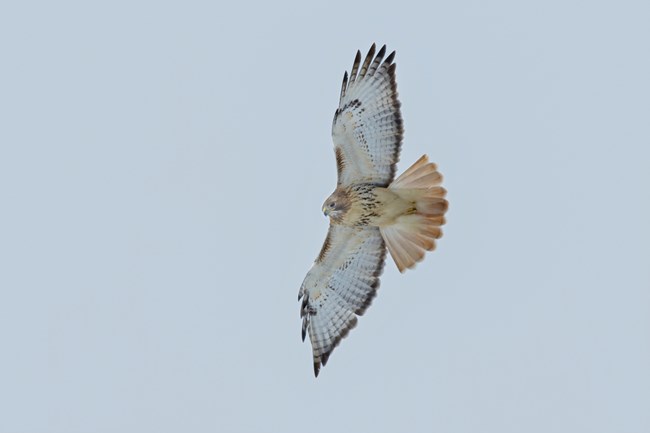
© Jim Kaftan
Imagine
If you were a red-tailed hawk, you would be a large, powerful bird. Your head, wings, and back would be covered by dark brown feathers. The underside of your body would be lighter. As an adult, your tail feathers would have a signature red color that can be seen when you fly. If you were hungry, you would circle above a grassy field or perch in a nearby tree. If you saw a small furry animal, you would dive with your legs stretched out and grab your prey with sharp claws. To tell everyone that you are in the area, you would soar above calling Kee-eeeee-arr!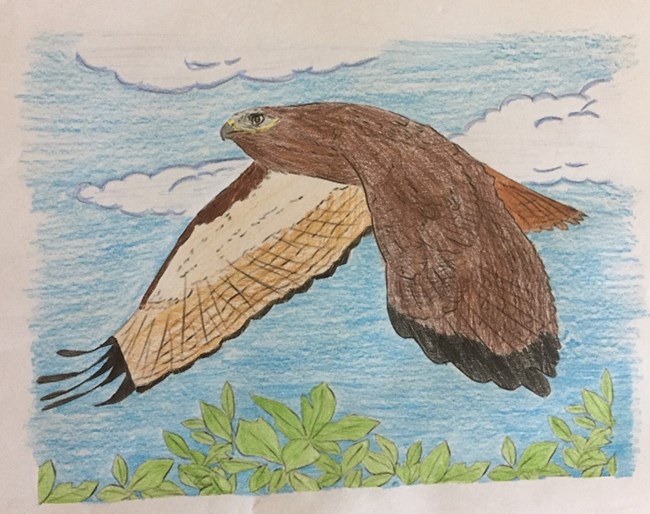
NPS photo of a www.supercoloring.com design.
Make
Print and color your own red-tailed hawk.Materials
- Coloring page
- Crayons, pencils, or markers
- Refrigerator to put up this great picture!
Look/Listen
Listen to the call of an adult red-tailed hawk.Listen to the call of a juvenile red-tailed hawk.
Watch a video of a red-tailed hawk catching prey.
Can you call like a red-tailed hawk? Kee-eeeee-arr!
Move
Watch the Look/Listen video then practice being a hunting hawk. Clear an open area to play inside your home. Place a stuffed animal (or any soft item) on the floor. Take off your shoes and socks. Go to the edge of the room and spread your wings (arms). Pretend to swoop down on your prey. Try to “catch” it with your talons (toes). Try this several times as hawks aren’t always successful the first time. Return to your perch after each round. Wait for another tasty morsel to come into sight!Find
Step outside for a walk in your neighborhood or in a park with an open field. Look up at the sky. Do you see any birds circling high above? Keep your eyes open for a soaring bird with a red tail. Hawks glide with their wings straight out like an airplane, while vultures hold their wings up in a V. Scan the tops of telephone poles. Scan large trees along the edges of fields. These make great perches for hawks. Red-tails are also common along many highways. Their white chest feathers make them easy to spot as you drive by.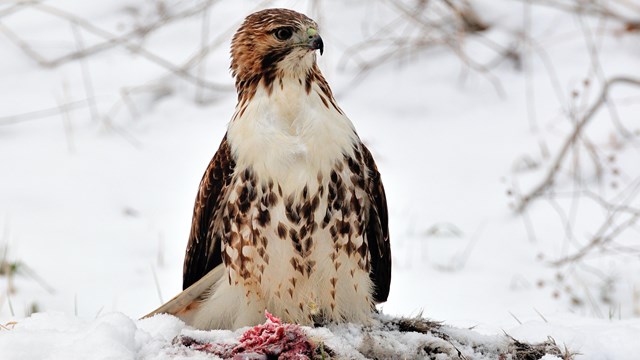
Red-tailed hawk eating
A red-tail sits in snow eating its prey. Credit: © J.J. Prekop, Jr.
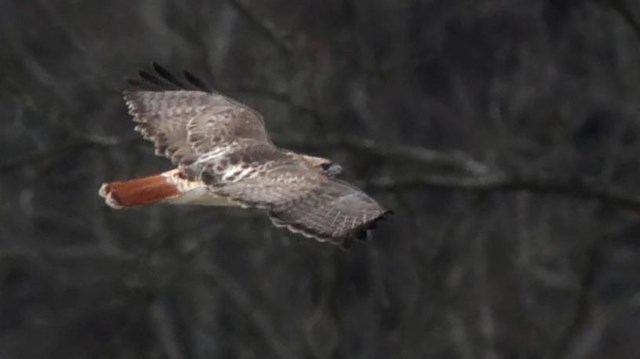
Red-tailed hawk
Notice the rusty tail of this adult. Credit: © Jim Kaftan
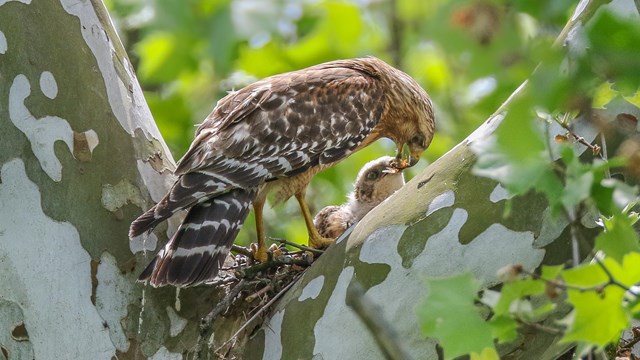
Broad-winged hawk
A broad-wing parent feeds its chick a large insect in Cuyahoga Valley National Park, Ohio. Credit: © Rick McMeechan
